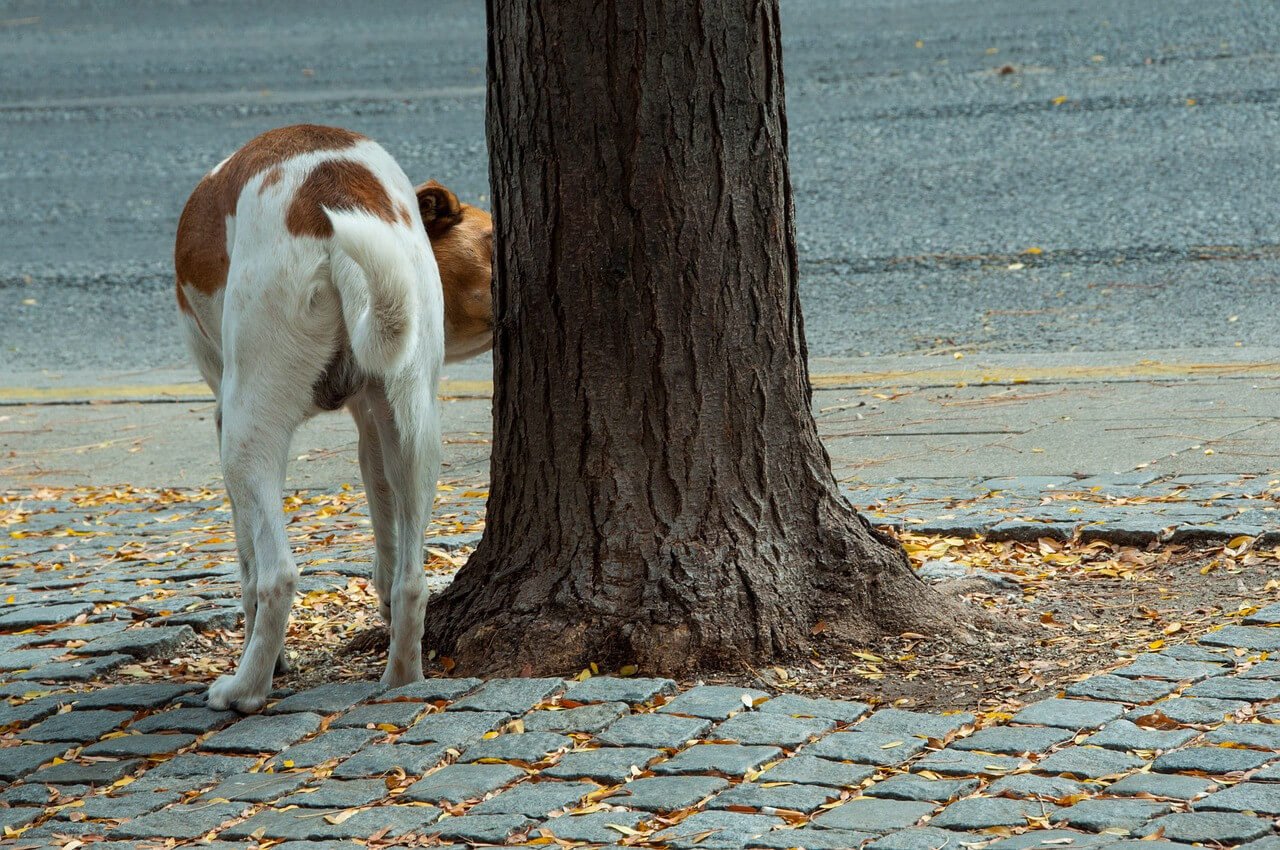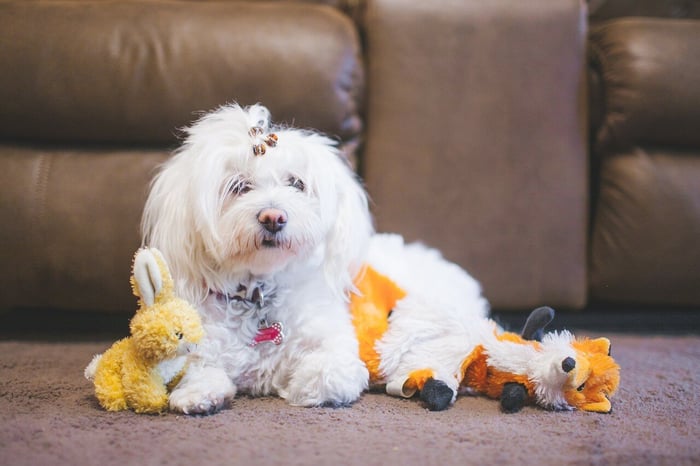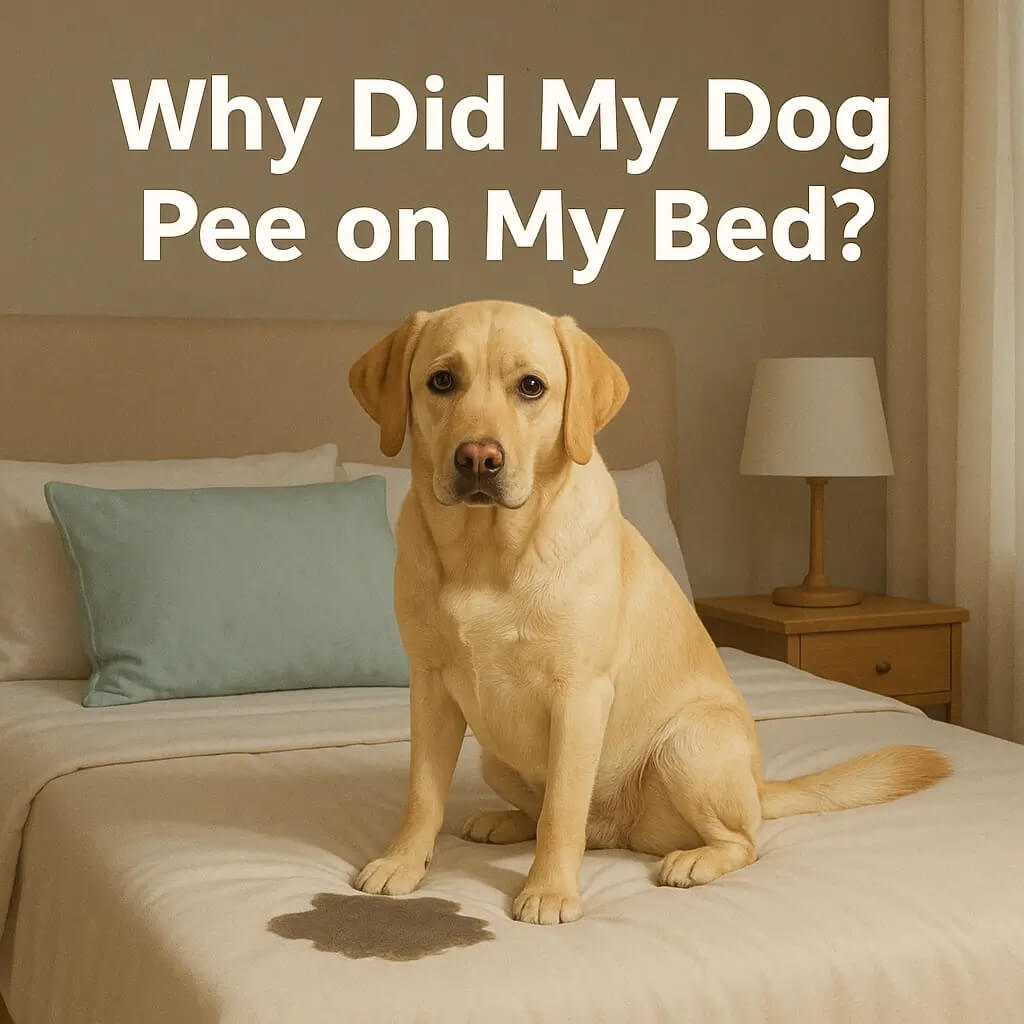The delights of puppy parenting! Everything about a puppy may melt our hearts: their contagious energy, those floppy ears, the small tail wags. But, in between the kisses and playtimes, there's a less glamorous aspect to puppy-rearing: the repeated treks outside for those pesky toilet breaks. You're not alone if you've ever wondered, "How Often Do Puppies Pee?"
Understanding a puppy's potty routine is more than a game of duck-and-cover. It's essential for efficient house training and creating a comfortable routine for both you and your pet. Dive into this book with me as we unravel the mysteries of your pup's bladder habits, and trust me when I say you'll be one step closer to mastering the art of the puppy potty dance by the end!

Factors Affecting Puppy Pee Frequency
Several factors influence how often puppies pee, and understanding these will help any dog owner establish an effective potty training routine to prevent accidents in the house:
Age: A young puppy typically has smaller bladders and therefore requires frequent potty breaks.
Size and Breed: Younger dogs and small breeds often need more frequent bathroom breaks due to their smaller bladder size.
Water Intake: Puppies who drink more fresh water naturally experience more frequent urination.
Activity Level: Vigorous play sessions usually increase a puppy’s need to pee.
Health Issues: Frequent urination or straining can be a sign of medical issues like UTIs, kidney problems, or bladder stones — always consult your vet if you notice other symptoms.
General Guidelines by Age for Potty Training
Successful potty training involves knowing how often puppies need bathroom breaks based on their age. Here’s a simplified guide to help your new puppy adjust:
Newborn to 3 Weeks
Very young puppies have minimal bladder control.
Need to urinate about every two hours — yes, that often!
Require caregiver assistance for elimination.
3 to 8 Weeks
Slight improvement in bladder control.
Still need toilet breaks roughly every two hours.
Start toilet training with puppy pads to create a designated potty spot.
8 to 12 Weeks
Active puppies need to go out every 1–2 hours and immediately after eating, drinking, or playing.
Use positive reinforcement (praise or treats) when your pup goes in the right place.
This stage lays the groundwork for successful crate training.
3 to 6 Months
Puppies hold their bladder roughly one hour per month of age.
For example, a 4-month-old puppy can wait about 4 hours.
Ideal time for crate training and routine establishment.
6 Months and Older
Typically need 3–5 potty breaks daily.
Bladder control is nearly fully developed, similar to adult dogs.
Continue watching for accidents, especially when lifestyle changes or stress occur.
Fully Orthopedic Surround Support Waterproof Large Dog Bed

CHF 45.00
Introducing the Fully Surround Orthopedic Waterproof Large Dog Bed, where supreme comfort meets durability. This bed is specially designed for the playful dog that loves to burrow and for the pet parent who values restful, supportive sleep for their canine… read more
The Importance of a Routine
Establishing a consistent potty routine is one of the most effective ways to potty train your young puppy and prevent little accidents around the house. Puppies thrive on predictability, and a structured schedule helps them develop the habits and confidence needed for successful house training. Here’s why routines are essential:
1. Builds Trust and Confidence
A predictable bathroom break schedule reassures your puppy that their needs will always be met. Younger puppies especially benefit from knowing they can count on regular outings, which helps reduce anxiety and build trust with their dog owner.
2. Helps You Recognize Their Cues
Over time, a routine makes it easier to identify your puppy’s unique potty signals, like sniffing, circling, or heading toward the door. Knowing when your pup is likely to need a potty break helps you take proactive steps to avoid accidents.
3. Encourages Predictable Digestion
Feeding your puppy at the same times every day aligns their digestion with their potty routine. This regularity not only aids their metabolism but also makes it easier to anticipate when they’ll need to go outside.
4. Reduces Accidents
By sticking to a routine, you can guide your puppy to their designated potty spot before they have a chance to pee indoors. Over time, this reduces the likelihood of frequent bathroom breaks turning into unexpected messes in the house.
5. Prepares Them for Independence
As your puppy becomes familiar with their routine, they may begin signaling when they need to go outside. Whether it’s by heading to the door or grabbing their leash, these signs show they’re learning to manage their bladder control and becoming more independent.

How to Create a Potty Routine
Start Early: Begin scheduling potty breaks as soon as you bring your puppy home.
Set Specific Times: Take your puppy out after meals, playtime, and naps, and stick to these times consistently.
Use Positive Reinforcement: Reward successful potty trips with treats or praise to reinforce good habits.
Limit Nighttime Water: Reduce water intake a few hours before bed to minimize nighttime accidents.
Night-Time Considerations for Puppies
Just like human babies, puppies often have trouble holding their pee for long periods, especially overnight. To avoid accidents at night:
Arrange a final bathroom break right before bedtime.
Use crate training to help your puppy develop better bladder control. Dogs naturally dislike soiling their sleeping area.
Provide easy access to designated puppy pads or pee pads overnight if your puppy continues having difficulty.
Consider hiring a dog walker or setting an alarm to ensure your puppy gets necessary nighttime potty breaks until they gain more control.
Following these tips will make nighttime less stressful, minimize little accidents, and help your puppy transition smoothly toward becoming fully house trained.

Tips for Effective Potty Training Your Puppy
When you bring a new puppy home, understanding how often do puppies pee becomes essential. Just like human babies, puppies have smaller bladders and therefore require more frequent potty breaks compared to adult dogs. Here's how you can successfully potty train your furry friend and prevent accidents around your house:
Create a Consistent Routine
Establishing a clear and consistent routine helps your puppy understand when and where they need to pee. A good rule is that most puppies can hold their bladder for about one hour for every month of age. For example, a young puppy at two months typically requires a bathroom break every two hours.Take Your Puppy Out Frequently
Initially, you'll need to provide frequent bathroom breaks, especially after your puppy eats, drinks fresh water, wakes from naps, or engages in vigorous play. As puppies grow older and gain more control over their bladder, you can gradually extend these intervals a bit longer.Use Puppy Pads or Crate Training
To avoid accidents during the early phases of house training, consider using puppy pads. Another effective method many dog owners use is crate training, which promotes quicker development of bladder control. Dogs naturally prefer not to pee in their sleeping area, so a crate can be highly effective for teaching your pup to hold their bladder for longer intervals.Watch for Signs Your Puppy Needs to Pee
Most puppies show clear signs they need to pee, such as circling, sniffing, or whining. Being attentive to these signals helps you provide timely potty breaks and minimize those pesky little accidents.Positive Reinforcement is Key
Reward your puppy with praise, treats, or affection immediately after successful potty sessions. Positive reinforcement makes the training enjoyable for both you and your pup, significantly enhancing the effectiveness of the potty routine.Plan Ahead for Longer Periods Away
If you’ll be away from home for several hours, hiring a professional dog walker or providing easy access to designated potty areas is important. This ensures your puppy maintains their routine, avoids discomfort, and reduces the risk of health issues such as urinary tract infections or even bladder stones.Be Patient—Every Puppy is Different
The timeframe to fully house train your puppy will vary depending on several factors, including breed, personality, and individual physical development. Remember, younger puppies require more frequent urination, while older dogs or senior dogs might experience challenges related to aging, such as kidney problems or reduced bladder capacity.
By following these practical potty training tips, you'll foster a healthier environment for your beloved dog and quickly achieve a fully developed potty training schedule.

Conclusion
Puppyhood is full of joy — playtime, cuddles, and yes, the occasional wee on the floor. But with routine, patience, and positive training, your pup will soon be house trained and confident.
After a long day of potty training and play, give your dog a cozy place to rest — like a Waterproof Dog Bed, Human Dog Bed, or a Dog Sofa Bed.
Each potty break, every success, and all the tail wags are part of what makes being a dog owner so rewarding.
Provide the best quality of life for your pet and explore more premium pet products! Click here: https://funnyfuzzy.com/pages/funnyfuzzy-department-store-shopping-guide-2024-holidays












